Ethnic Rhinoplasty: Nose Reshaping in Harley Street, London
Ethnic rhinoplasty is the terminology given to patients who are not caucasian who require specialist rhinoplasty techniques to achieve a natural result. If you’re looking for the best ethnic rhinoplasty in London, you’ll know that it is a surgery of finesse and detail, even a 1mm change can be seen.
FACELIFT SURGERY IN HARLEY STREET
What is Ethnic Rhinoplasty?
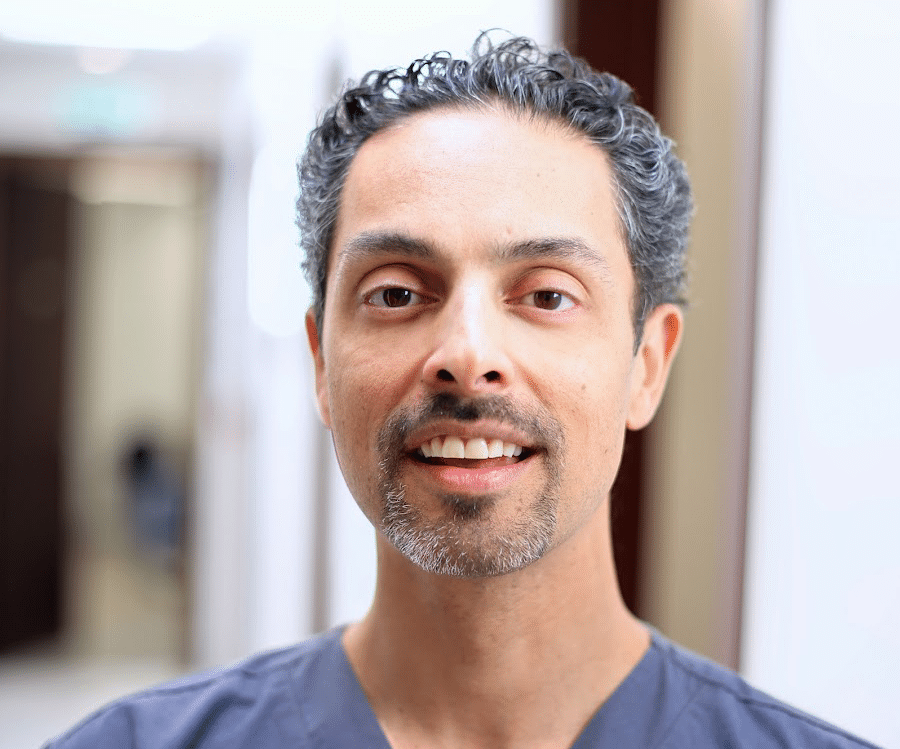
Dr De Silva believes that nose reshaping requires special techniques for improving definition and shape and keeping a natural appearance. Whether you are from an Asian, Middle Eastern, Afro-Caribbean, or any other background, ethnic rhinoplasty is tailored to your individual facial features.
What To Expect From Ethnic Rhinoplasty?
As the name suggests, ethnic rhinoplasty refers to a style of nose job that is designed to preserve the ethnic nasal characteristics of a patient and requires a different set of techniques and skills for each patient.
There is no “one size fits all” approach with ethnic nose surgery, as what looks beautiful and natural for one ethnicity may look less attractive to another.
When performing an ethnic nose surgery in London, Dr De Silva works to make the corrections you would like without taking away any of the ethnic identifiers that link you to your cultural background. His extensive experience means that he is extremely familiar with each ethnic group’s unique features.
What Are The Challenges Of Ethnic Rhinoplasty?
Every ethnicity is marked by a unique nose structure. Typically, people from varying ethnic backgrounds have different nasal arches, skin thickness around the nose and nostril sizes.
During your initial consultation, your surgeon will do a full examination of your nose, taking note of the adjustments you would like to make, and creating a plan of action that meets your requirements. Your surgeon will take special care to preserve your ethnic features as part of your surgical plan.
In ethnic nose surgery, the skin is often thicker and there may be a fat pad at the tip of the nose, this may require refinement and graft material to give more tip definition. For markedly thick ethnic skin advanced techniques are required to give more definition to the bridge of the nose often utilising sculpted graft material. To achieve these results, your surgeon will change the shape of the bone and cartilage.
Why Choose Dr De Silva in Harley Street, London ?
Dr De Silva is a widely credited and celebrated facial plastic surgeon who specialises in the eyes, nose, face and neck areas only, and is known for natural results.
“My focus has and always will be to be the very best at what I do, to continually innovate to provide World Class leadership to all my team, all my patients and all my associates. My mission is to help every patient be the very best version of themself with World-Class services, life-long follow up with complimentary facial aesthetic procedures.”
In a world of increasing complexity and misinformation, his passion has been focused on providing sincere advice, low risk and fast recovery procedures.

Facelift & Facial Only Treatments
By focusing entirely on only facelift & facial cosmetic surgery procedures, Dr De Silva is able to provide the expertise that can only come with specialisation: facelift and neck lift, blepharoplasty, rhinoplasty and chin implants.
Natural Looking Results
Dr De Silva is a believer in the importance of artistry behind cosmetic results and focuses his skills at delivering natural looking results.
Fast Recovery
Dr De Silva has pioneered the advances in technology to speed up recovery with a combination regenerative medicine techniques, Oxygen and LED Therapy.
World Class Expertise
Dr De Silva also teaches other surgeons internationally and has contributed to the development of advanced surgical techniques, laser technology and stitch-less tissue adhesives.
Nose Reshaping Questions
- Thicker nasal skin
- Increased swelling after the procedure and longer recovery time
- Many ethnic groups have less flexible, and thicker cartilage
- Additional fat under skin & reducing tip definition
- Lower bridge and shorter nose
- Wider nose and nostril/ alar flare
- Darker skin tones can be more prone to scarring after surgery
What Are The Risks?
As with most nose surgeries, all patients have a degree of swelling and bruising that resolves over a period of weeks, 80-90% of the swelling resolves over the first six weeks although the final result is not apparent until at least twelve to eighteen months.
Risks that are relatively uncommon include asymmetries, tip definition, delayed healing, numbness, infection and scarring. The majority of these risks are avoidable with technical expertise and skill. Revision rates for nose surgery are around 8%, although the risks can be resolved, revision rhinoplasty is more challenging than primary rhinoplasty as a consequence of previous surgery and scarring.
Dr De Silva Is An Advocate For Patient Safety
Patient safety is of key importance for all facial plastic surgery. The intricate anatomy of the nose requires precision and care. Dr De Silva is a keen advocate of patient safety and has championed the need for patient safety on Sky news.
Case Studies
World Class Facial Cosmetic and Plastic Surgery
Ethnic Rhinoplasty Before & Afters
Dr De Silva has transformed thousands of faces through his unique surgical techniques. Below is a small sample of some of his transformations.
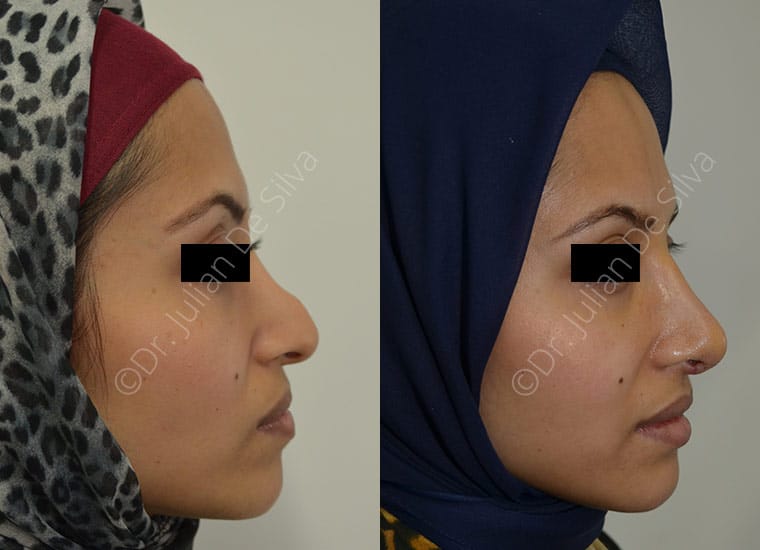
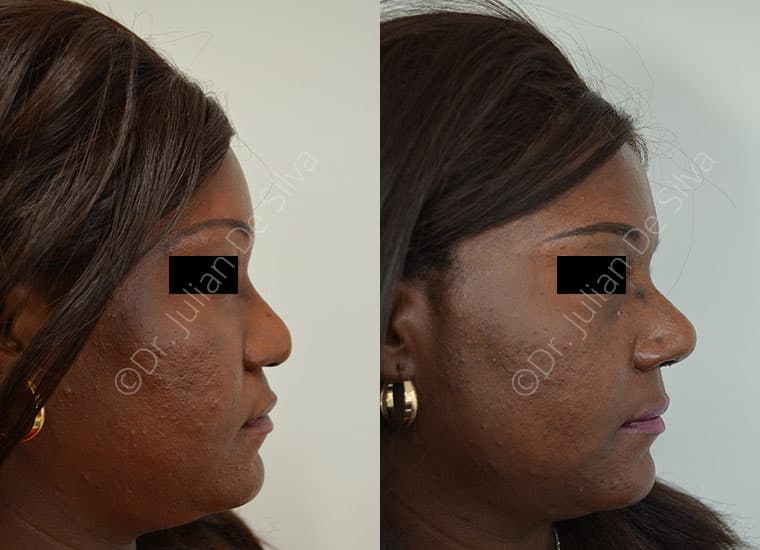
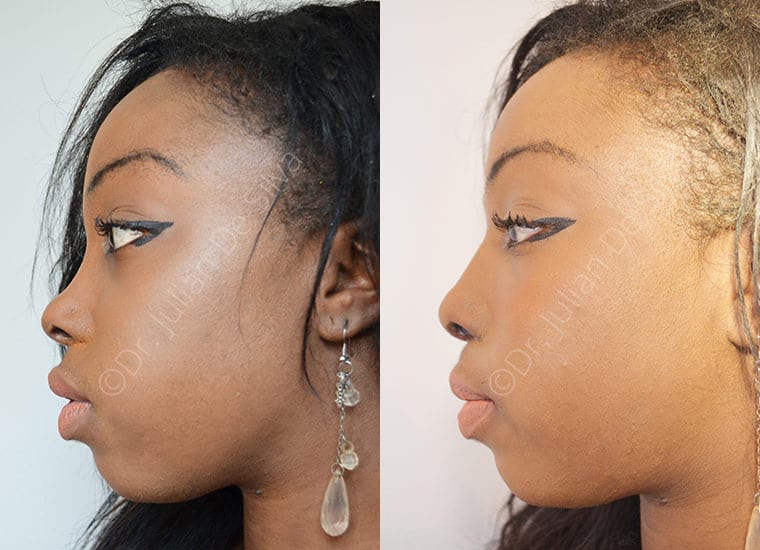
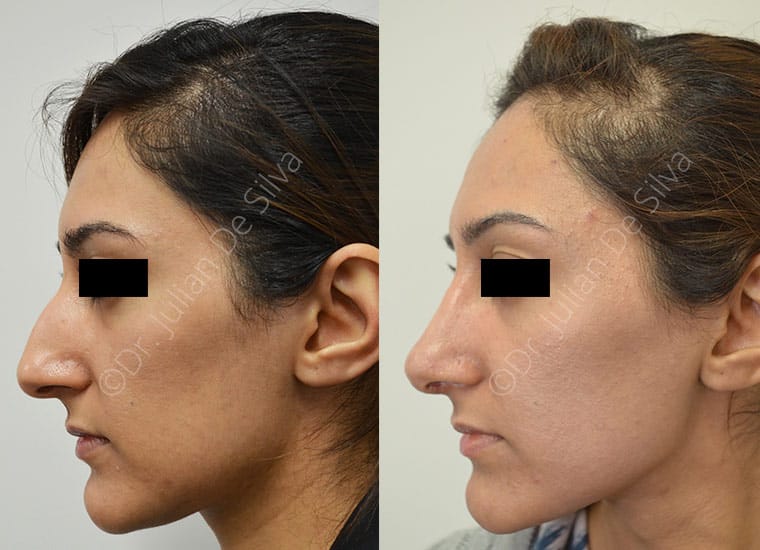
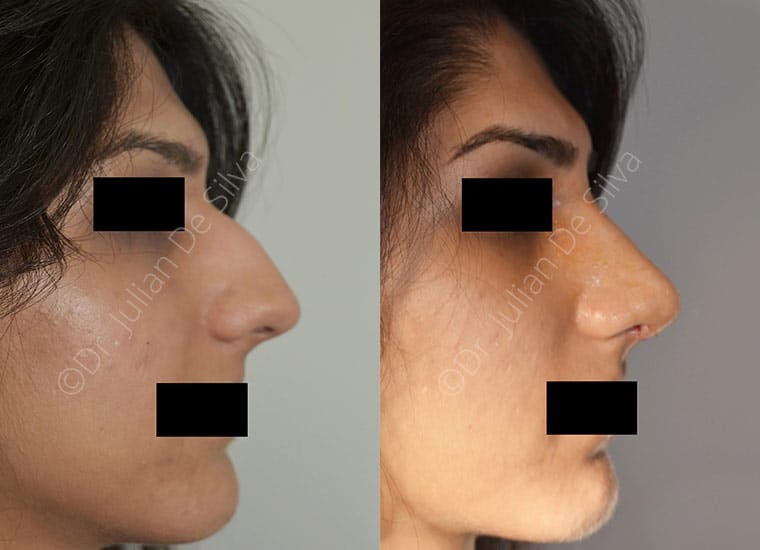
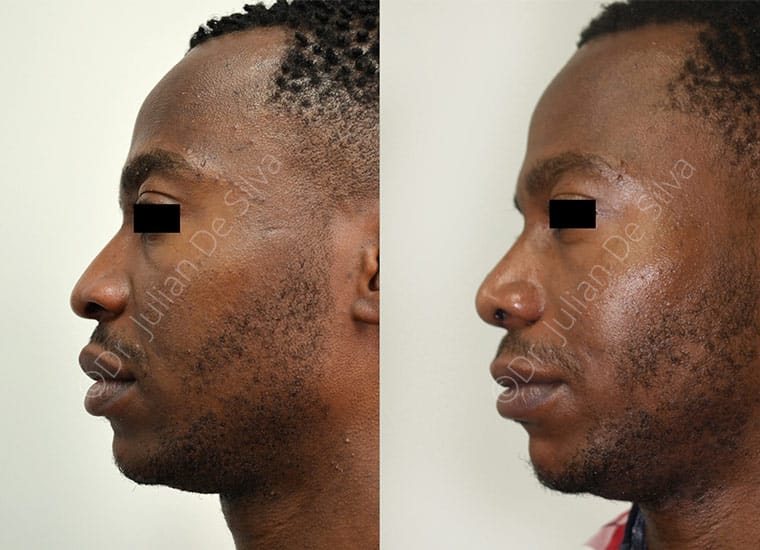
TESTIMONIAL
What our satisfied clients are saying
“From the moment I first met Dr Julian De Silva I knew I had chosen the right surgeon for me! I was apprehensive as it had taken me years to pluck up the courage to have rhinoplasty and at 69 it was a big decision! Dr De Silva has the most calming disposition, both in his manner and his speaking voice and he immediately made me feel at ease, answering my questions and explaining the procedure clearly. The day of my surgery arrived and again I really felt confident that I was in very good hands!”
Madeleine
Rhinoplasty
Frequently Asked Questions
I Live Abroad, How Can I Have Surgery?
Dr De Silva has a large number of patients that live overseas. Our specialist team can help you organise a virtual consultation and coordinate your trip to the UK.
You would need to say in the UK for approximately 10days, prior to covid, many patients would fly internationally to London to undergo rhinoplasty before returning to their home country.
We are able to utilise the latest technology to enhance your recovery including oxygen therapy, medications, lymphatic drainage and regenerative medicine.
At What Age Should You Get Rhinoplasty?
Most patients who look to undergo nose reshaping have felt self-conscious about their nose for many years before attending the consultation.
A nose that is out of balance with your face often becomes apparent in teenage years, though many patients take years to look into changing their nose.
Rhinoplasty is most commonly completed in patients aged twenty to forty-five, and Dr De Silva has completed surgery for some teenagers and patients in their 80s. Dr De Silva has had patients travel long distances and internationally for opinions on their nose, sometimes they have been refused surgery by local surgeons.
Often there may be additional factors to consider with increasing age, these can include breathing issues, drooping tip (termed ptosis) and increase irregularity, and these may require additional treatments at the same time to ensure a successful result.
Am I Too Young to Have Rhinoplasty?
Dr De Silva sees many younger patients for nose shaping in their teenage years. Many of these patients have disliked the appearance of their nose for many years before attending a consultation, and some have associated breathing issues and have been teased about their appearance.
Of key importance before considering rhinoplasty is the patient understands the implications of surgery, recovery, and expectations.
Utilising modern surgical techniques are important to ensure a long-lasting natural result. Dr De Silva completes nose reshaping on younger patients only when it is in their best interest and some patients travel long distances to London.
Do I Need to Go to Hospital?
Rhinoplasty is commonly completed in a general hospital with other surgical procedures in a general private hospital. Patients often are concerned about issues with general hospitals such as MRSA and hospital-acquired infection. Dr De Silva has built a custom state of the art facility including a private operating theatre to enable complete specialisation for every patient.
How Much Does Rhinoplasty in London Cost?
When looking for the best rhinoplasty results in London then costs should not be a consideration, but rather focus on the facility, qualification, experience, and technique of your surgeon. Given these considerations, expect to pay anywhere between £5,000 to £15,000 for a nose job in London, UK.
Can Rhinoplasty Be Combined With Other Techniques?
Dr De Silva frequently combines rhinoplasty with other facial procedures to give a natural-looking result and avoid the use of scars associated with conventional techniques:
Contact Details
Call: 020 8748 2860
Email: info@drjuliandesilva.co.uk
Address:
23 Harley Street
London, W1G 9QN, UK
Dr Julian De Silva
5 stars based on 458 reviews

Renowned expert in Facelift/Facial Cosmetic and Plastic Surgery. Signature techniques in Blepharoplasty, Rhinoplasty and Facelift surgery. Expert in revision surgery and in natural looking results

